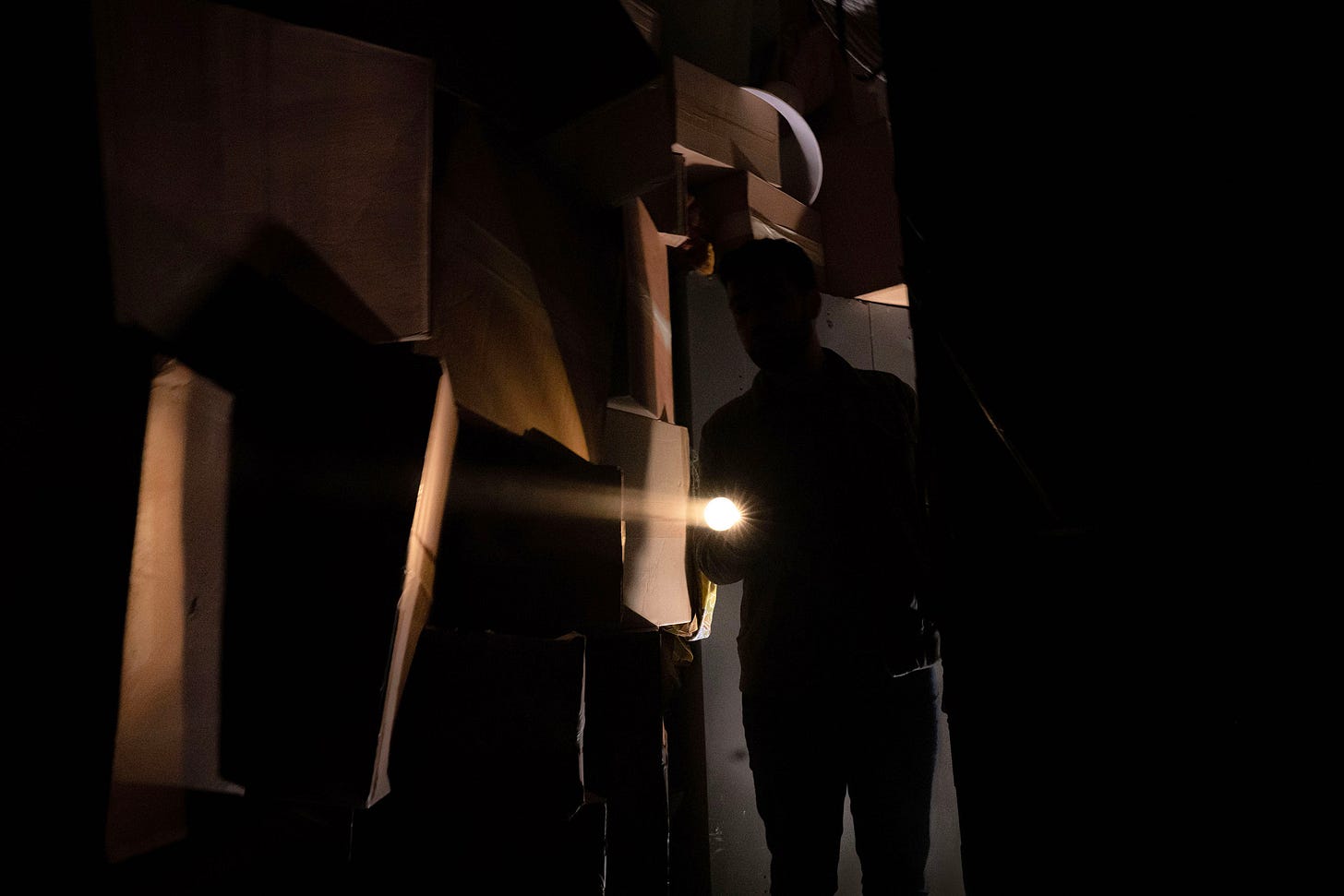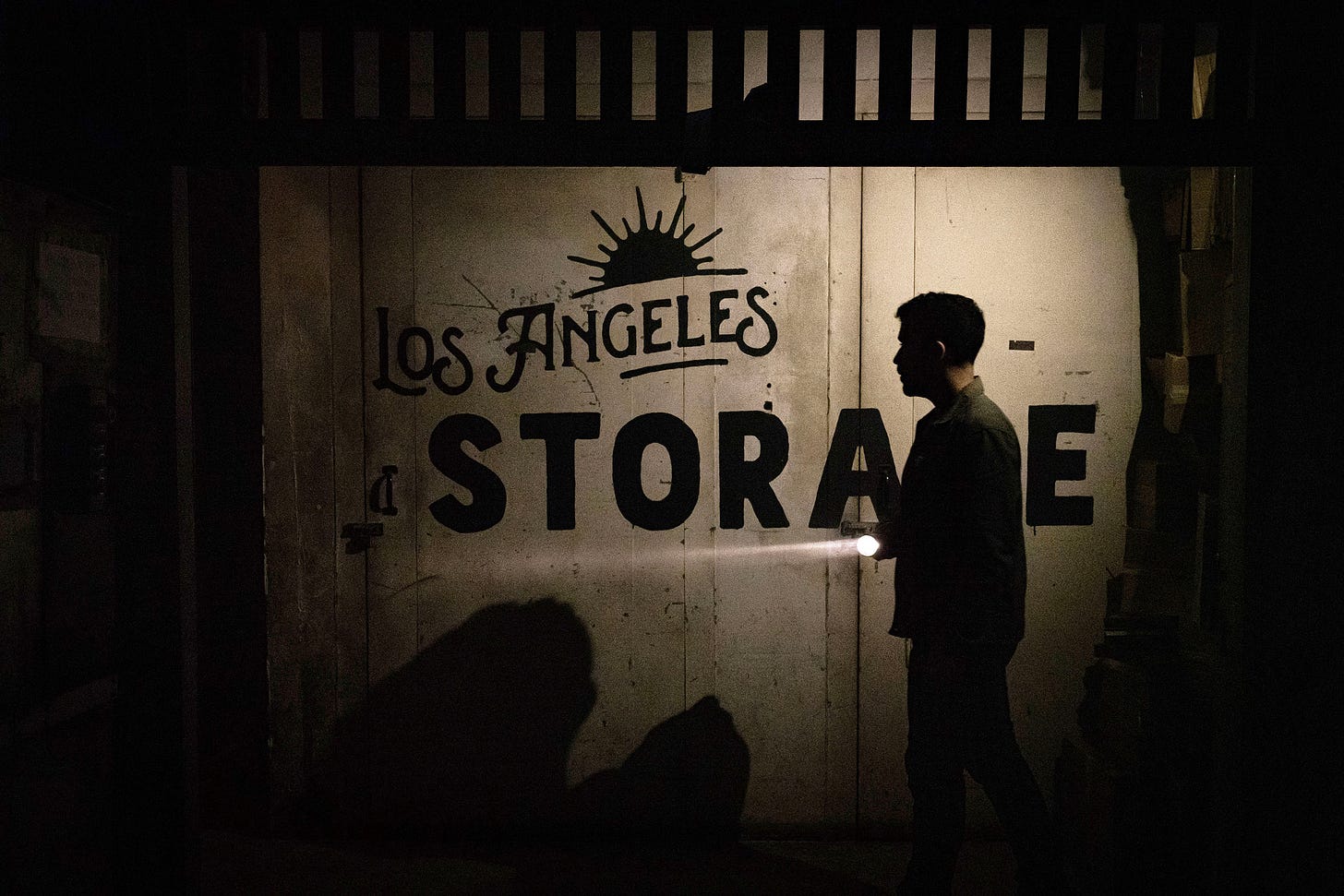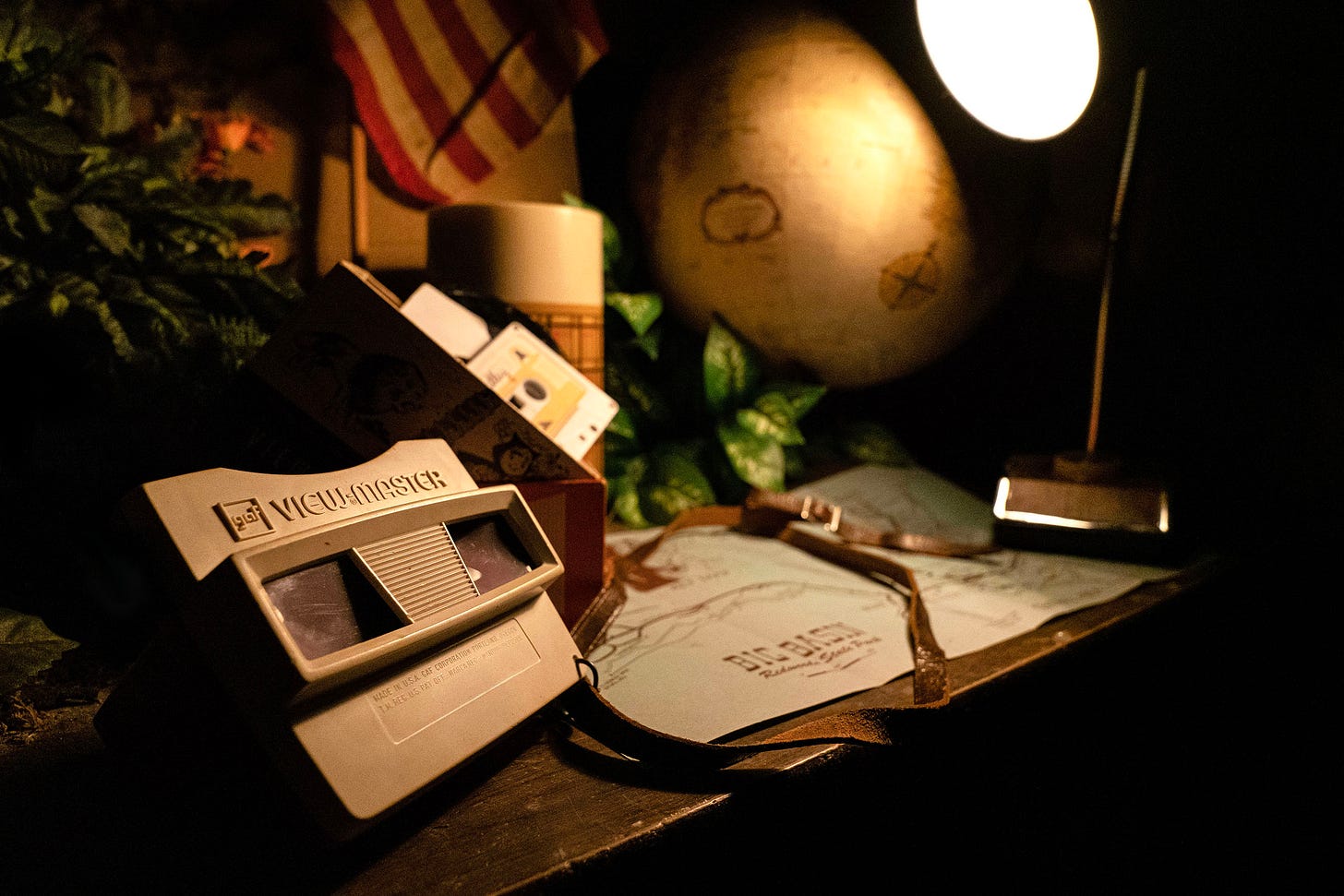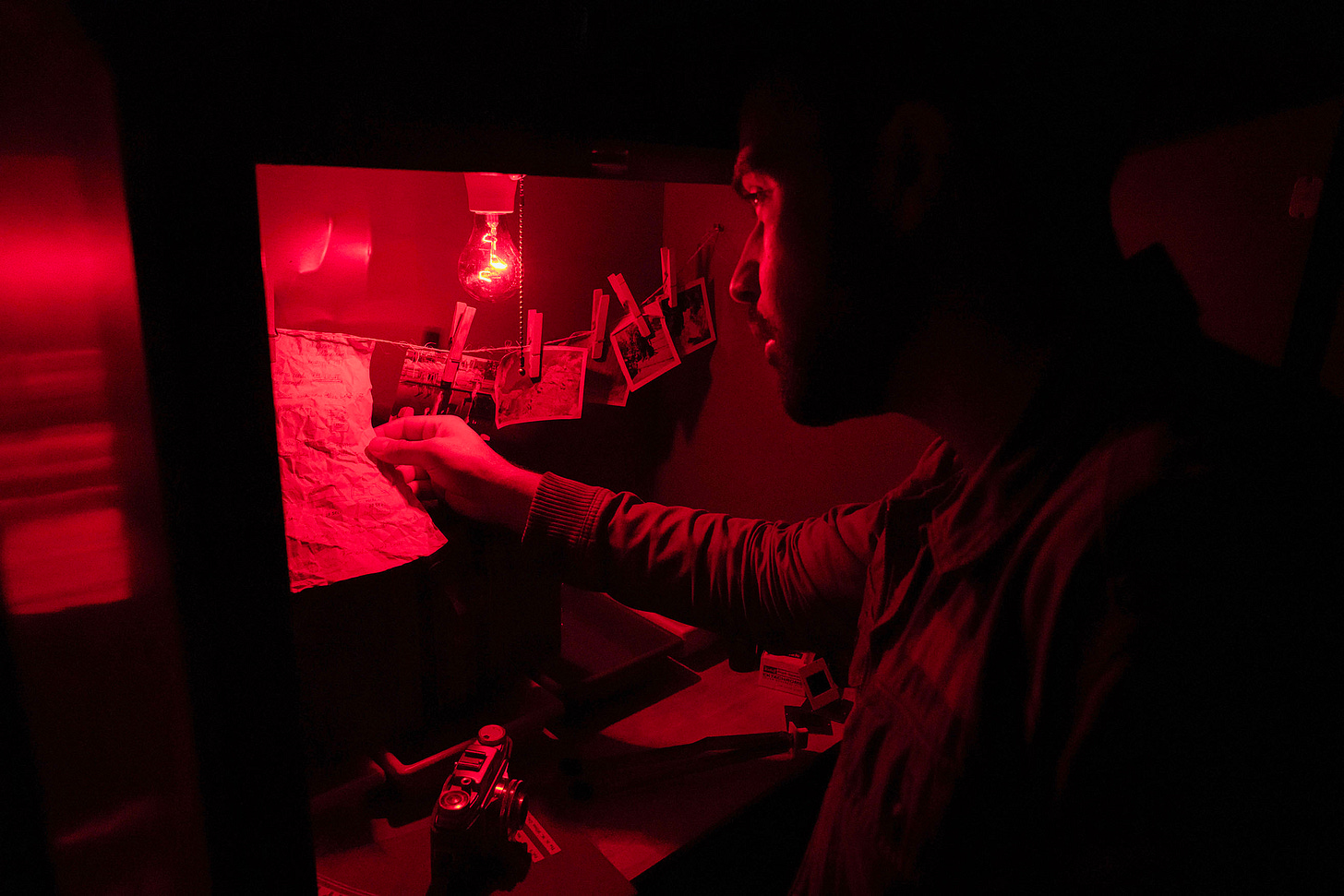The Nest
So much more than a real-life walking simulator
Hatch Escapes, Los Angeles
$125-$150 flat fee for 1-2 guests
1 hour
The Nest is a real world live experience where you explore an abandoned storage unit, learning about its owner by looking through her belongings and listening to cassette tapes she recorded. While it has much more story than traditional escape rooms or immersive theatre, there are still puzzles: some areas of the unit are initially locked or hidden until you discover clues or keys.
I’ve mostly given up on spoiler warnings in this newsletter but I’m going to reinstate it this time. If you’ve played first-person narrative-centric “walking simulators” like Gone Home or What Remains of Edith Finch, little here will shock you. However, The Nest is unusual amongst real world experiences so if you plan on visiting soon, you might want to skip this one. If you don’t, the only way I can talk about the specifics of The Nest is by spoiling it.
SPOILERS COMMENCING
After buying your ticket for The Nest, you receive an email informing you that you’re the winner of an auction for a storage unit that used to belong to Josephine Carroll, who recently died.
Wish I could tell you more about her, but according to the folks at LA Storage, she didn't have any family. Kind of a sad situation really. But hey -- it's all yours now!
At the venue, you’re met by an actor/receptionist who quickly switches to “in character” mode, pretending to be a receptionist for LA Storage. She congratulates you on your auction win and provides an unavoidably clunky series of instructions familiar to any escape room player (don’t force things open, don’t dig through boxes, lock PIN codes are unique, etc.). One day we may be so familiar with escape rooms that this is no longer necessary, in the same way that we (mostly) don’t need to be told how to behave in theatres or cinemas, but until then, we get these instructions.
She leads you to a corridor that looks identical to a real storage warehouse and hands you a key along with a torch; it’s dark in there. Oh, and apparently there are cassette tapes in the unit – Josephine used to be a journalist, so you’ll want to listen to those.
On entering, you’re confronted by a cramped, warren-like space. Books and boxes and papers are stacked so densely that you have to inch your way through. You collect a portable cassette player and listen to the first tape you see – a recording of Josephine’s birthday as a child. As you listen, you continue exploring the unit, turning over photos, opening lockers. You notice a few cabinets and doors that are locked near the entrance, and realise that one of your objectives will be unlocking them.
While there’s a lot to look at, there’s very little you have to read; no letters or newspaper clippings, very few notes. This is probably for the best – it’s dark and it would get tiring if you had to do a lot of reading.
If you’ve played walking simulators or studied theme parks, you’ll recognise how The Nest follows their design patterns; when you enter a new room or cubbyhole in the storage unit, you’ll see interesting things framed in front of you, like a desk with a lamp and a Viewmaster photo viewer and another tape. After you’ve thoroughly investigated them and turn to leave the way you came back in, you notice something right by that entrance – another doorway, a locker, etc.
That’s how The Nest attempts to create a linear narrative experience while giving you the illusion of complete freedom. In reality, it’s possible to see some early things “out of order” but the story of Josephine’s life is so well-telegraphed and in some cases, literally written out, that it’s easy to figure things out regardless. But later on, as the drama intensifies, progression in The Nest becomes strictly gated so that it’s impossible to experience it out of order…
At this point, it’s worth noting a few things. Firstly, somber music is playing on loudspeakers throughout the entire experience. It’s a little odd because up to this point, everything has been designed for the utmost of verisimilitude, but hey, it’s good atmosphere.
Secondly, while the voice acting is good, the crackly audio and the ambient music make it hard to fully understand the tapes; I’ve made an audio-based game for the last eleven years, so I’m qualified to say this. It never got to the point where I had no idea what was going on, but I definitely got things mixed up, and if your hearing isn’t great, you will have problems.
Thirdly, while you (and optionally, a friend) are in there on your own, you’re being constantly monitored. Shortly after you enter, an old fashioned phone rings; the manager says she’ll be in touch with anything she finds out about the unit while you’re in there. This didn’t happen because I never got stuck or started trying to force open a door, but I’m sure had that happened, she’d have called with hints or instructions.
Live monitoring is standard in escape rooms, which makes them very expensive to run – just imagine doing the same thing for video games with millions of players. It’s necessary because many experiences lack the kind of player tracking that would allow hints and instructions to be given automatically. Why? Because individual escape rooms don’t get enough players to justify building bulletproof automation, and escape rooms aren’t mass produced or standardised enough that you can amortise the development costs.
The Nest’s puzzles are all very easy, and at first, quite literal: codes written on top of photos, that sort of thing. One charming moment sees you actually develop a photo for real, by switching on a red light and dipping it into four different chemical baths.
As you progress, the puzzles start making less sense; you thread a string through pins on a map, and when you’re done, a key is magically deposited into a nearby receptacle (because you’re being watched!). At the same time, the space around you also becomes more fantastical, transforming from a convincingly overstuffed storage unit into dioramas from Josephine’s life, like a bedroom or a hallway.
The transition feels astonishingly natural given how far it takes you from reality. I’ve been to a lot of immersive experiences and I’ve never seen it done so well as The Nest. The same goes for the impeccable set design: everything looks real. I’m sure this is thanks to The Nest having so few players, meaning it doesn’t get bashed up as much as an escape room that sees ten times as many people per day, yet it’s still amazing.
This doesn’t make The Nest better than larger experiences – Punchdrunk chooses to host hundreds of people at a time, which means it can afford impressively wide spaces and dozens of live actors – but it does highlight the trade-offs. I always laugh whenever I see guests queuing patiently to enter a “special” room in immersive theatre, or chasing after an interesting actor, or craning their necks to look over a crowd. In The Nest, as in single player video games, your experience is never compromised by others.
Indeed, some moments that first felt like compromises end up as strengths. I was annoyed at toting the large cassette player from room to room – why didn’t they give me a Walkman and headphones? – but I came to enjoy finding places to settle it down. Likewise, holding my torch in the crook of my neck as I entered a code in a lock made me feel like I was in The X-Files. You don’t get that in video games! So while it’s tempting to call The Nest merely a real-life version of Gone Home, where you wander through an empty house, examining objects and listening to cassette tapes (audio logs strike again!), the physicality of the experience makes it very different.
But some compromises remain just that. There’s only so much story you can tell in an hour, especially if you can’t use any text. Stories fall towards familiar tropes in these circumstances: heartbreak, coming out, death, murder, falling in love, the loss of a child, etc. There’s nothing wrong with that, but their broadness can disguise a lack of depth and specificity, no matter how much environmental storytelling you wrap around it. I was moved by parts of Josephine’s story, but her life never felt more than a sketch, the outlines of which I’d seen a thousand times before. Is the story bad? No. It’s just not as well-crafted as the rest of the experience.
There’s an individuality to The Nest that’s missing from so many story-centric games that feel stretched out, occupying far more time and space than they need. When you’re building something in real life, where it’s expensive to add a new wall or fashion a tunnel, you have to make every moment and every millimetre count. Everything has to be placed just so.
The result, if you get it right, is a weight of experience in a single hour that you cannot get in games ten or a hundred times longer.








Very cool write up! I'm not an escape room person but I enjoyed reading this! Also lol at carrying a cassette player around from room to room